How anime and JRPGs made Marvel's Midnight Suns a better strategy game
How the XCOM team sold Marvel on a strategy card game shaped by Persona, Fire Emblem, and more
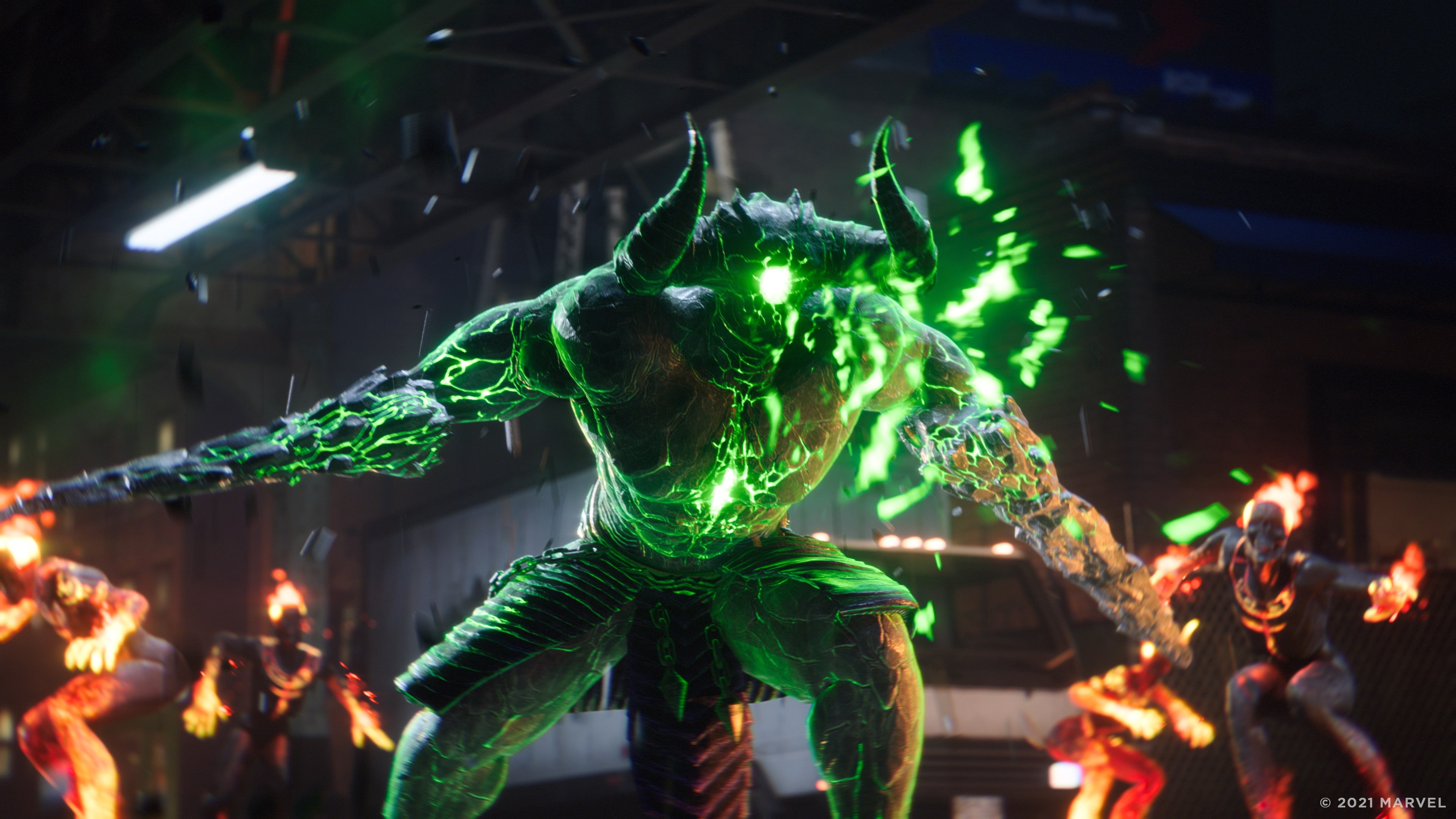
XCOM: Enemy Unknown and XCOM 2 director Jake Solomon did not expect Marvel to approach Firaxis about making a game in its universe. Nobody at the studio did. The team was wrapping up work on XCOM 2: War of the Chosen when the offer came in, and Solomon, a self-described hardcore Marvel fan and now the creative director of Marvel's Midnight Suns, tells me he had to fight the urge to accept it immediately.
"If we had not done War of the Chosen, I don't know that Midnight Suns would have happened," he says. "Because it would have been too much of a reach where we're like, I don't know that we can do that. I don't know that you can put this much narrative structure into the kind of game that we make."
"They said, 'Hey, there are a lot of people at Marvel games who are really big fans of XCOM and they want to know if the team would be interested in making a Marvel game,'" Solomon explains. "Not even a Marvel XCOM, just a Marvel game. Gut reaction, for me anyway, was 'Immediate yes!' And then I was like, well, 'Immediate hang on a second!' – I've never worked with IP before. But then soon after that, we were overcome with a fever of like, man, I would love to be able to have these characters. It was just too exciting for me and for a lot of people on the team."
Solomon says Marvel was remarkably accepting of even the team's wildest proposals. Instead of the bigger, more prominent Marvel eras and characters, Firaxis chose to retell and flesh out the old Midnight Sons comic run, hoping to mine a darker, supernatural niche that would stand out in the rapidly expanding Marvel universe. Firaxis dug up more obscure versions of familiar heroes, like Robbie Reyes' Ghost Rider. The studio also wanted an original and customizable hero, the Hunter, the daughter of the main villain Lilith – a considerable get for a licensed game working with such storied characters. Firaxis won all of this and more, but getting there wasn't easy.
Oh shit, this isn't working
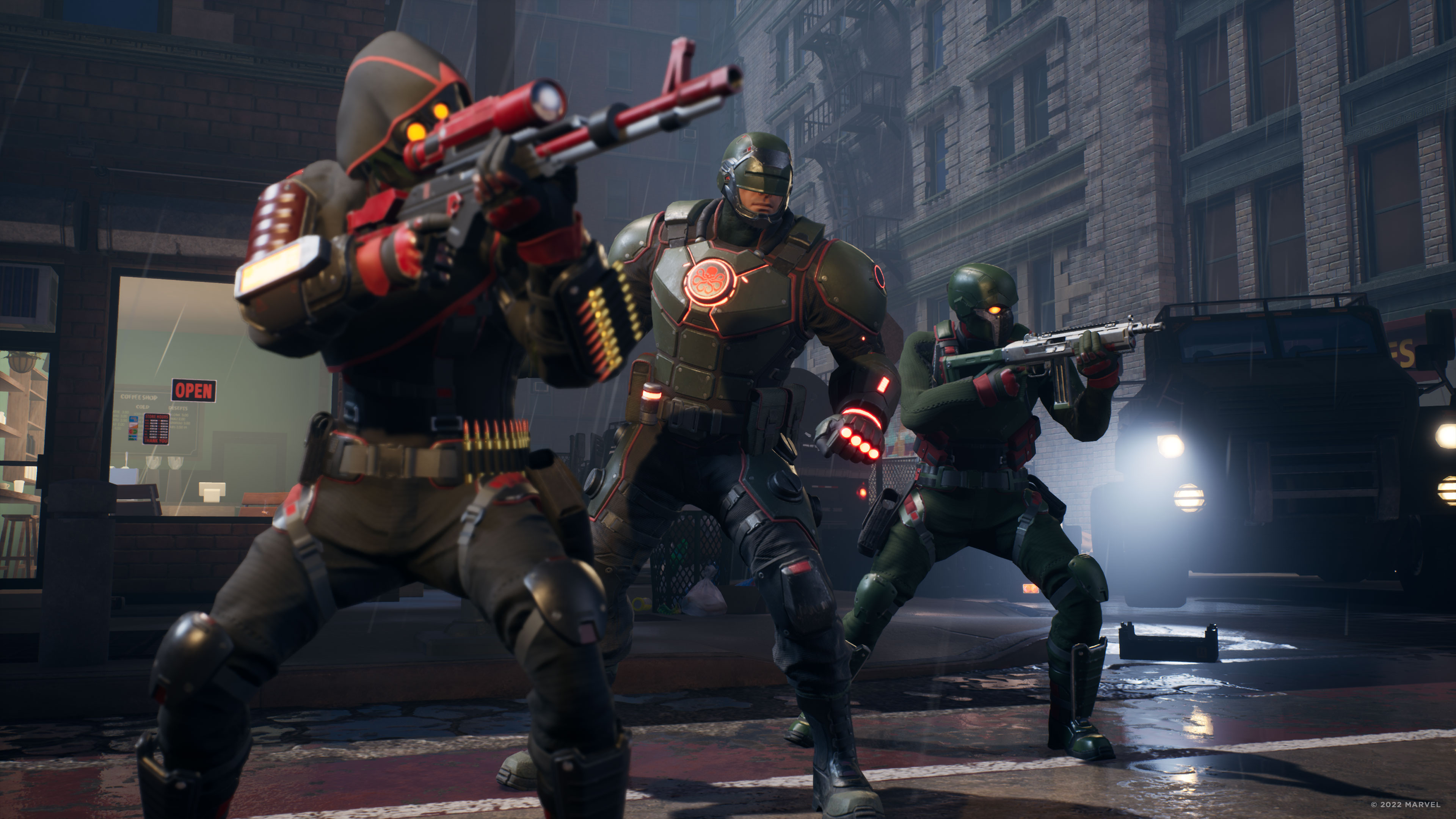
The director jokes that, at first, "I originally thought, okay, what we're gonna do is we're gonna make XCOM, and we're gonna put some Marvel superheroes in, and it's gonna be awesome." The team drew up a list of around 25 heroes and started to whittle it down to the necessities, focusing on the supernatural pillars of the Midnight Sons and folding in popular characters where it made sense, shedding the likes of Frank Drake and Hannibal King in the process, until arriving at the core 13 heroes that Marvel's Midnight Suns has today.
Oh my god, this is all tumbling down.
Jake Solomon
There was just one problem: it wasn't awesome. In fact, it didn't work at all.
"That's how stupid I am," Solomon says. "I was like, this is gonna be great and easy. And then you get a couple weeks in, and you're like, this doesn't make sense at all. A lot of tactics games are not a house of cards, they're a well-built pyramid. If you start saying 'well, no, they don't take cover' – that's absurd. And, no, their abilities don't have a chance to fail – that's absurd. Then you realize, oh my god, this is all tumbling down."
Sign up to the GamesRadar+ Newsletter
Weekly digests, tales from the communities you love, and more
Firaxis quickly learned that the bones of XCOM wouldn't mesh with the power fantasy of Marvel. If anything, the strategy series' cutthroat variance actively worked against it. The idea for Midnight Suns, Solomon says, was that the enemies are trapped on the battlefield with you – the clearly superior party. Players needed to feel powerful and see their favorite heroes looking powerful, but they couldn't actually be overpowered because the game needed strategic depth to pass the Firaxis test. Solomon shared one early red flag: "We want Captain Marvel's punch to be like boom… And then when a number floated up – and this sounds crazy, but this is how design works – it was like two, and you're like, 'what the fuck?'"
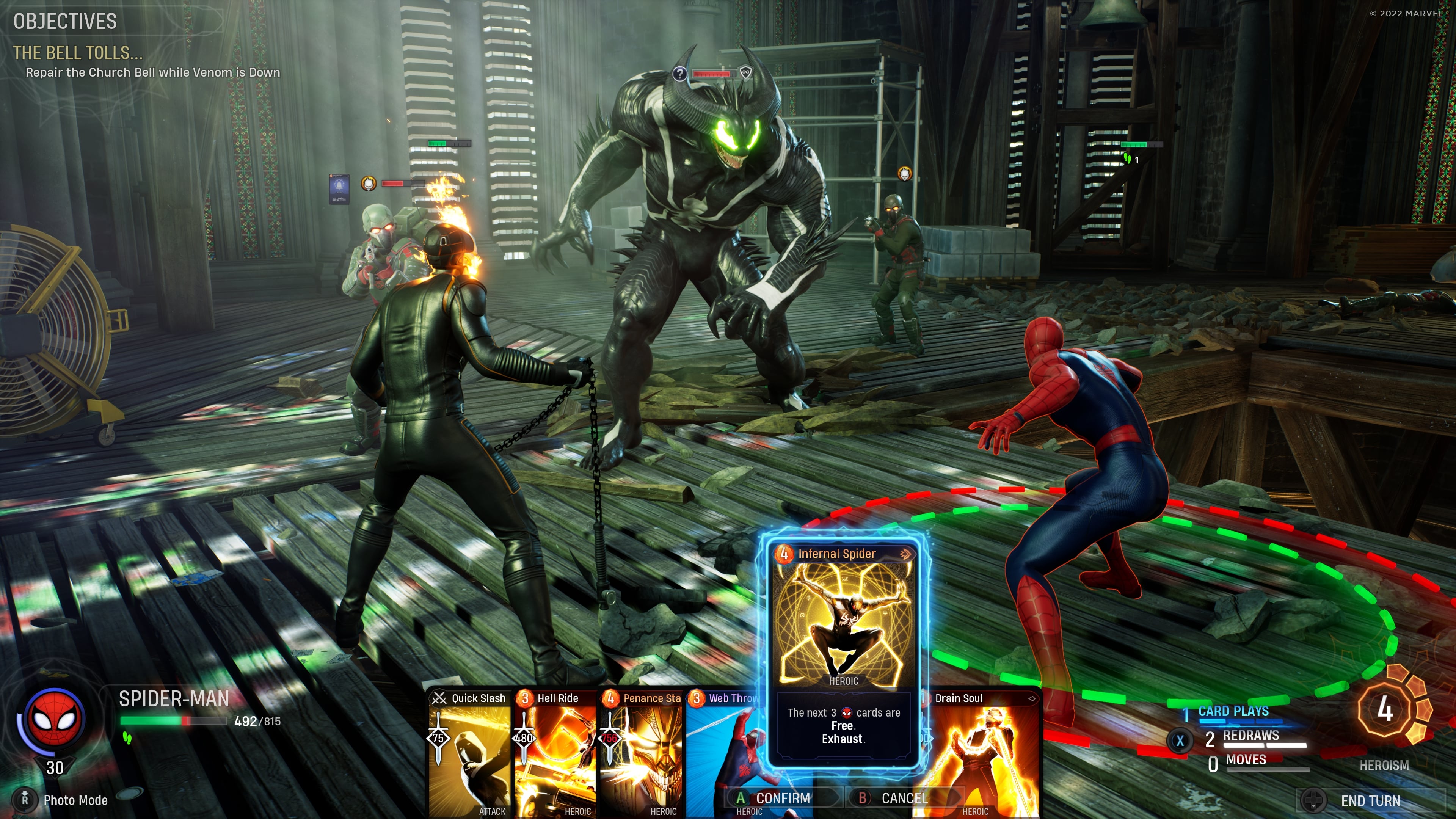
The deck-building component got some pushback from players, which Solomon expected, but he says Marvel was pretty open to the idea: "It kind of helps that we make the kind of games that we make because I think that there's a lot of assumptions of like, these guys must know what they're doing. And I was like, oh, yeah, sure. Got it all figured out, man!"
The problem, Solomon continues, was that "the theme and mechanics do not match up at all," which took Firaxis back to the drawing board pretty early on. Heroes needed to start off strong and get more powerful over time to fuel a sense of progression. Abilities needed to be consistent, but combat had to have tension. This problem led the team to try an unlikely solution: cards.
"How on earth do you design whole new systems? You start trying everything," Solomon says, explaining that the decision to experiment with cards was inspired by one game in particular. "It wasn't like, in my genius, I then knew we should just do cards… I was playing a shitload of Slay the Spire. We got to a point where we were all playing a lot of Slay the Spire. We were like, well, can we make this work? If we did it like this, maybe? There's something there, I think we can make this work. Years down the road, this is going to be really fun, right?"
That wager paid off. As I said in my Marvel's Midnight Suns hands-on preview, cards feel like a good fit for Midnight Suns' combat system. Not only does it allow the heroes to have powerful abilities right from the start of the game, but there's a layer of unpredictability with what you draw. What's key is that Midnight Suns intentionally avoids the complexity of full-fat deck-builders like Slay the Spire in favor of more streamlined customization and simpler turns. Each hero has a deck of just eight upgradeable and interchangeable cards, and while some cards extend your moves, you'll regularly play just three or four cards a turn, budgeting power based on your immediate goals.
A true-blue Firaxis game
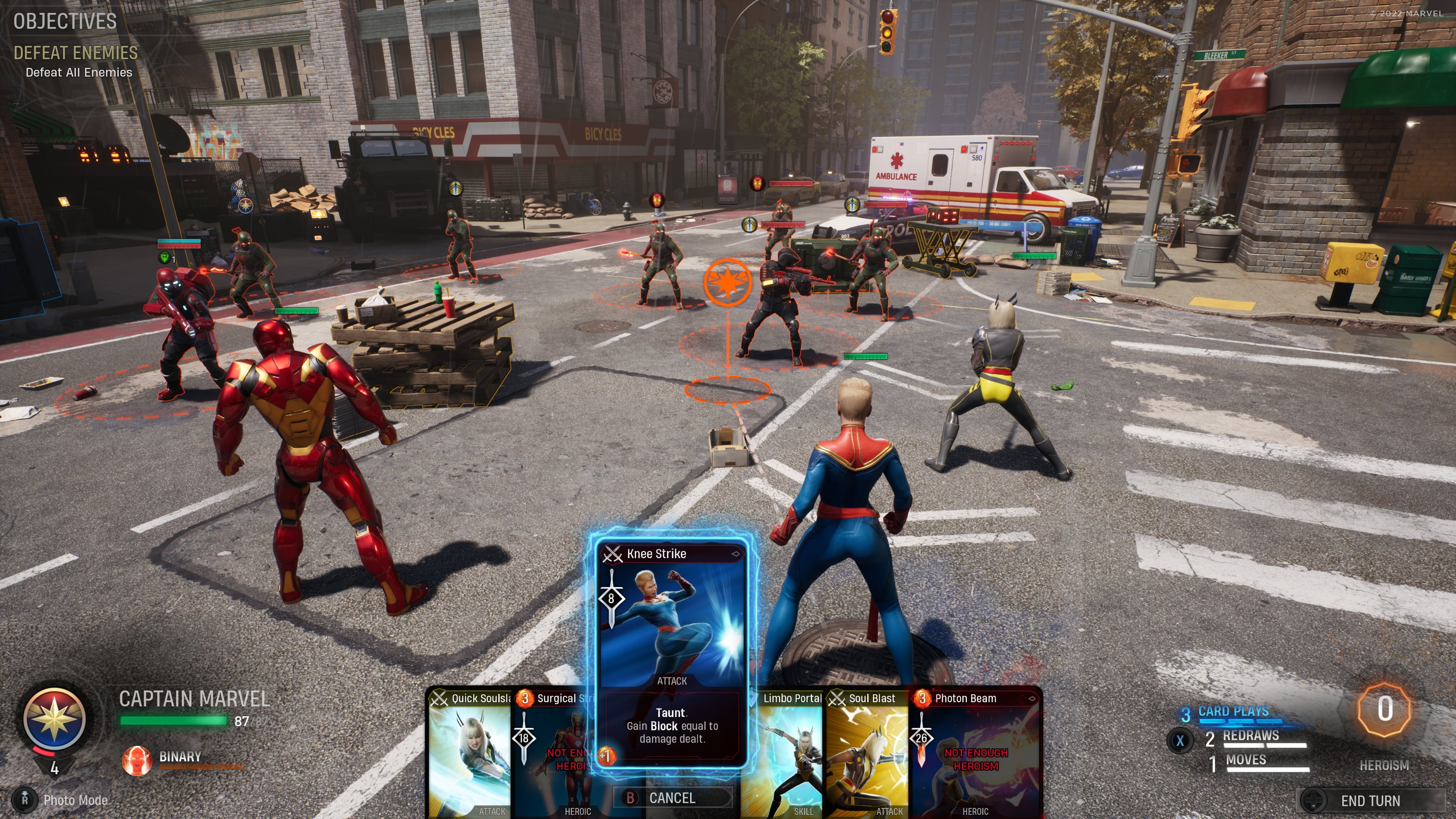
Marvel's Midnight Suns has always been threading a tight needle. It's like XCOM, but it's not XCOM. It has cards, but it's not a collectible card game. It's Marvel, but not the Marvel you've seen so much of before. Speaking as someone who has little experience with or attachment to Marvel stories, and is more interested purely in the mechanics of Midnight Suns, I asked Solomon to clarify what this game is and who it's for.
"First and foremost, we're making a tactics game," he begins. "I think the thing that keeps me up at night – and again, I'm a hardcore Marvel guy – but the thing that makes me and my team lose sleep is how good the game is. Over the years, it's what we worry about first and foremost: is this game up to either the Firaxis legacy or the things we've done before? Is this game actually fun and replayable for hours? I would sell my soul for that. That's the thing where, if I met the devil at the crossroads, he'd be like, do you want to tell the best story or do you want the most fun game? I'll take the most fun game. I don't know what the cost would be. I guess it'd be my soul."
I think with the mechanics of XCOM, I would be extremely hesitant if somebody was like, well, we'll do these card mechanics.
Jake Solomon
"I can say, as honestly as I can, I'm really happy with the tactical combat," Solomon adds, following up on a previous comment about Midnight Suns being a 60-hour game with replayability that goes even beyond that. "I find it to be as replayable and deep as XCOM, even though it has these big narrative elements to it. It's a very, very big tactics game. So with reactions to the cards, or reactions of 'oh, this isn't XCOM,' I totally get those. I don't have any problem with those reactions. My biggest concern is I just want people to play it and see what the game is … To people who've been fans of the stuff we've done here before, I'd say don't worry, we're still us, we still rise and go to bed thinking about the gameplay."
Solomon is also quick to stress that Marvel's Midnight Suns doesn't represent a major departure for how Firaxis operates, particularly where XCOM is concerned. He isn't currently working on XCOM, but he says that if he did return to the helm for the presumed but unannounced XCOM 3, it wouldn't come with card systems and other fundamental changes – he "would make XCOM" as we know and love it.
"I think with the mechanics of XCOM, I would be extremely hesitant if somebody was like, well, we'll do these card mechanics. I'd say, how is that going to match the theme of: you are soldiers who are very frightened? The fragility and actual flaws in your soldiers are the story generator in XCOM. And so I wouldn't recommend that. So no, and project-wise, we wouldn't do that. I think if somebody immediately went in a different direction, there'd be a lot of questions. Like, wait a minute, why would you mess with something that has proven success – that people have proven that it's the game that they want? I think that we – I – would be pretty hesitant to do that."
But more than just a strategy game
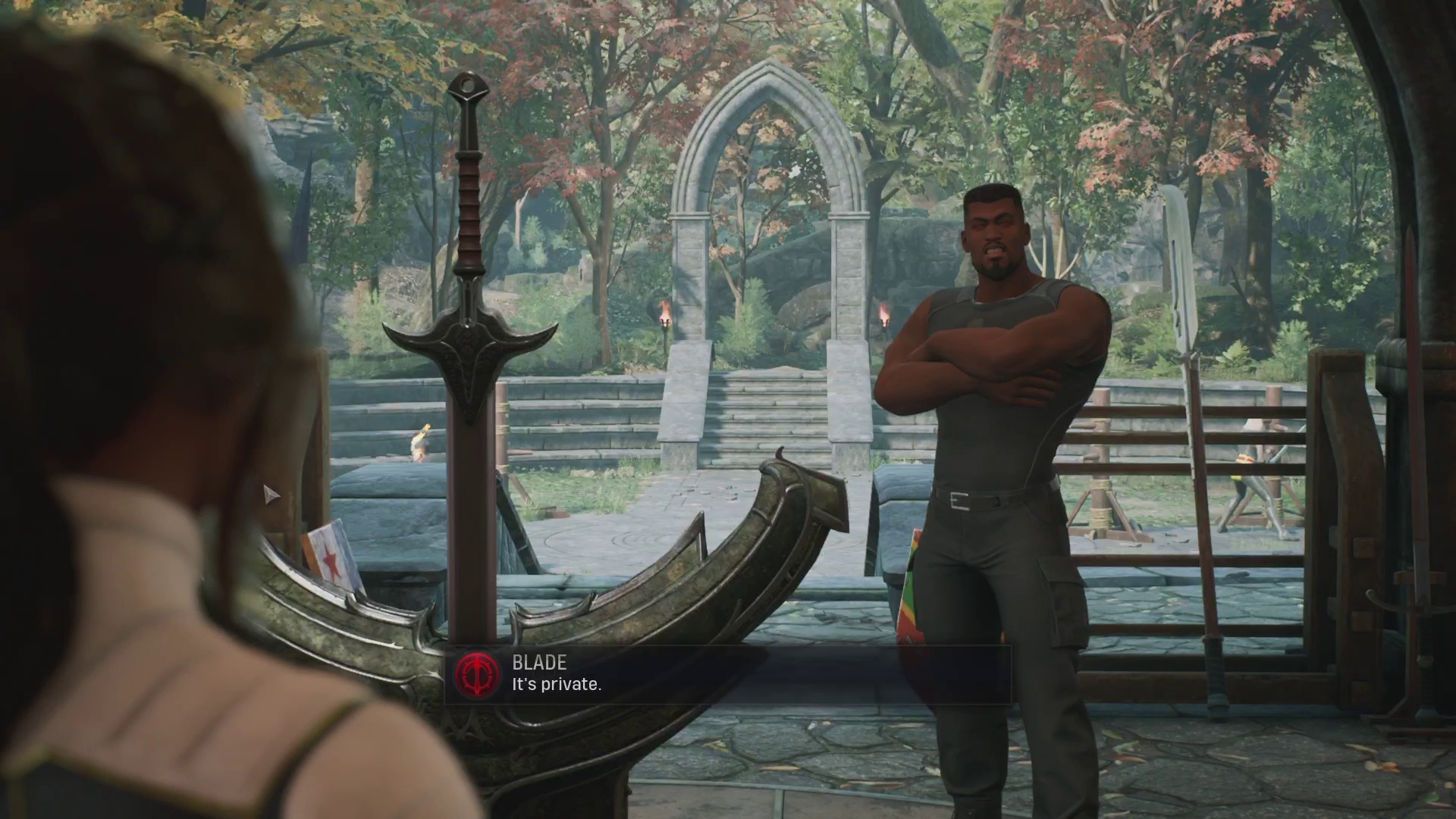
That said, Marvel's Midnight Suns does play very differently from XCOM, and I'm not just talking about the cards. The game's home base, the Abbey, is much more detailed and involved than your usual XCOM headquarters. It's also a space to develop more personal – but not romantic – relationships with your favorite heroes through a robust friendship system. You can hang out, give them gifts, and chat them up in branching dialogue. This immediately reminded me of JRPGs like Persona and the Tales series – comparisons I did not expect to make when I walked through the doors of Firaxis. Solomon lights up when I mention those games, and starts to reveal that Marvel's Midnight Suns has some surprisingly heavy Japanese influences.
Yeah, I played a lot of Persona, and I went even deeper than that.
Jake Solomon
"Fire Emblem, Persona, yeah," Solomon cuts in. "When Fire Emblem: Three Houses came out, we were a couple of years into development on this, and the name of the place [in that game] was the Monastery or something like that. It wasn't the Abbey but it was real close to that, and I was like, holy shit, you've gotta be shitting me! But yeah, I played a lot of Persona, and I went even deeper than that. Japanese developers have been doing awesome tactics games combined with RPGs – especially relationships. It creates this resonance where I'm worried about [characters] in the short-term in combat, and then I'm worried about them in this meta way back on the strategy layer. It creates this interesting loop."
Solomon even looked to dating sims for inspiration, particularly as Firaxis was toying with "the idea of coming up with mechanics for increasing friendship". You'll see this influence reflected in the way the Abbey functions, and in the way you can interact and bond with the various heroes around you. They're fun to talk to, and getting to know your favorite squad off the battlefield makes you more invested in their growth and well-being. Even in my limited time with the game, hanging out at the Abbey captured that distinctly JRPG progression loop, and the team's Japanese inspirations don't end there.
Earlier in the day, art director Dennis Moellers mentioned referencing some popular anime when stylizing hero attacks. Popular anime is much more my wheelhouse and I could smell weeb in the water, so I flagged him down for an interview and convinced Solomon to stick around.
Comics, obviously, but also anime
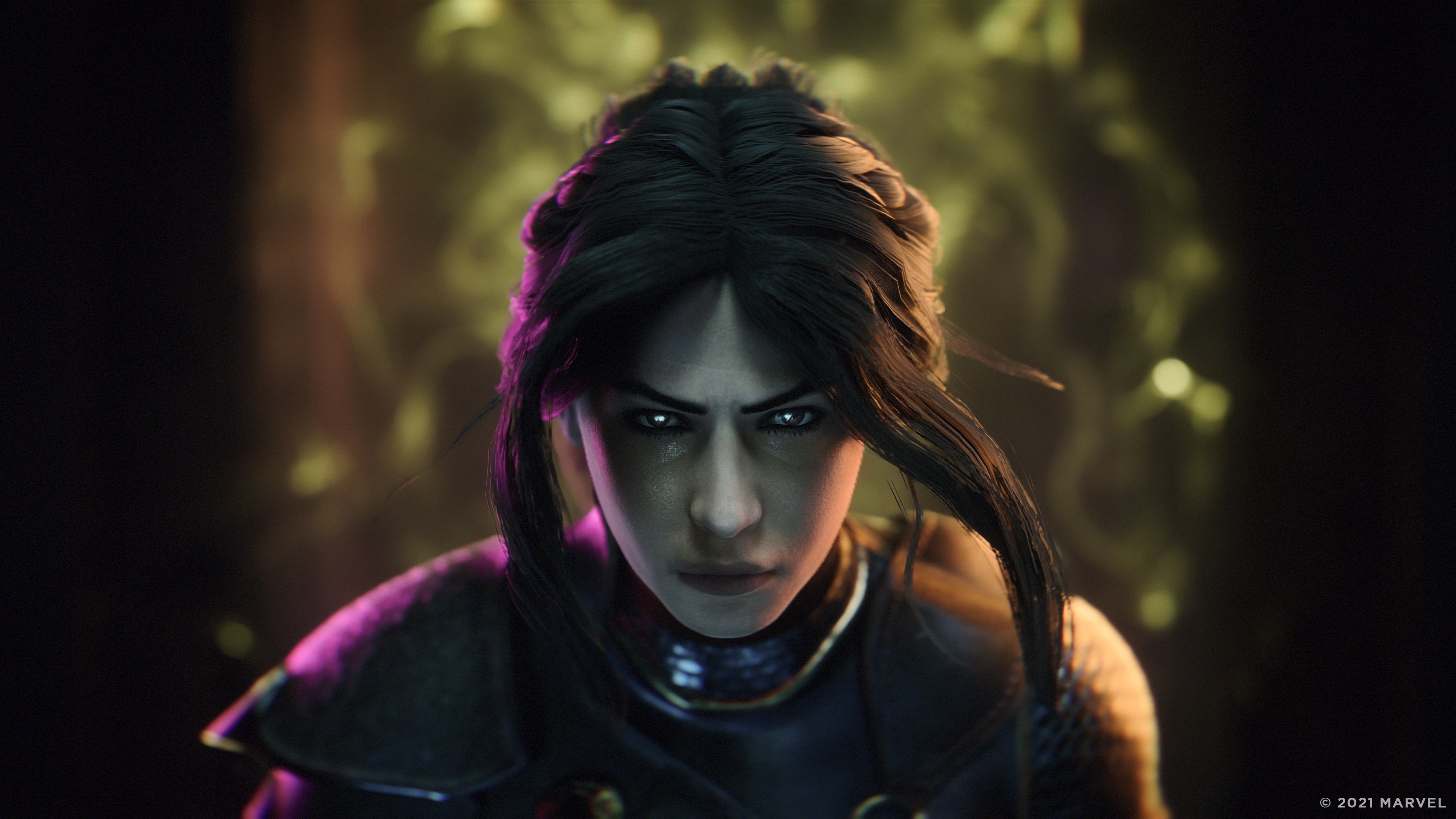
Moellers recalls watching anime with his daughter before and during the development of Midnight Suns, and what he saw would ultimately shape the way the game presents its heroes. "I was watching these scenes like, how? Why does it feel so good, like what's going on?" he says excitedly. "And it's like these full-screen flashes that they're doing on impacts, they're holding anticipations, they're going through these extreme camera angles. They're speeding up and slowing down time to ridiculous amounts. In the MCU, I think that stuff feels really good, but they just go double and triple the power and strength sometimes with some of this stuff."
Moellers points to a few popular moments from recent anime as standouts in the highlight reel he assembled and studied. Levi shredding the Beast Titan in season 3 of Attack on Titan, for example. Tanjiro eking out a win in episode 19 of Demon Slayer season 1, which lit the entire internet on fire when it aired. He also looked at Dragon Ball Fighterz, which he praises for nailing 2D flourish with 3D models. "And interestingly, I got into this, I don't know, six months or a year before I started on this project," Moellers explains. "And then as soon as I started, I was like, alright, let's put this into this project."
We specifically looked at that and just a bunch of different animated clips. But I remember specifically Dragon Ball Fighterz.
Dennis Moellers
"Yeah, you were also very upfront with Marvel that that was the animation style. You were like, 'we're going to be very anime-influenced with the animation'," Solomon adds. Moellers responds: "And they were cool with it!"
Captain Marvel is a useful benchmark for hero design at Firaxis. Solomon mentions seeing the early animations for her basic attacks and wondering how her special moves could be sufficiently more extravagant. Moellers told him, "don't worry, we'll make everything bigger than that," and abilities escalated from there. As an example, Moellers focuses on her Photon Beam attack, which deals heavy damage to multiple enemies in a straight line – and bailed me out more than once in my demo.
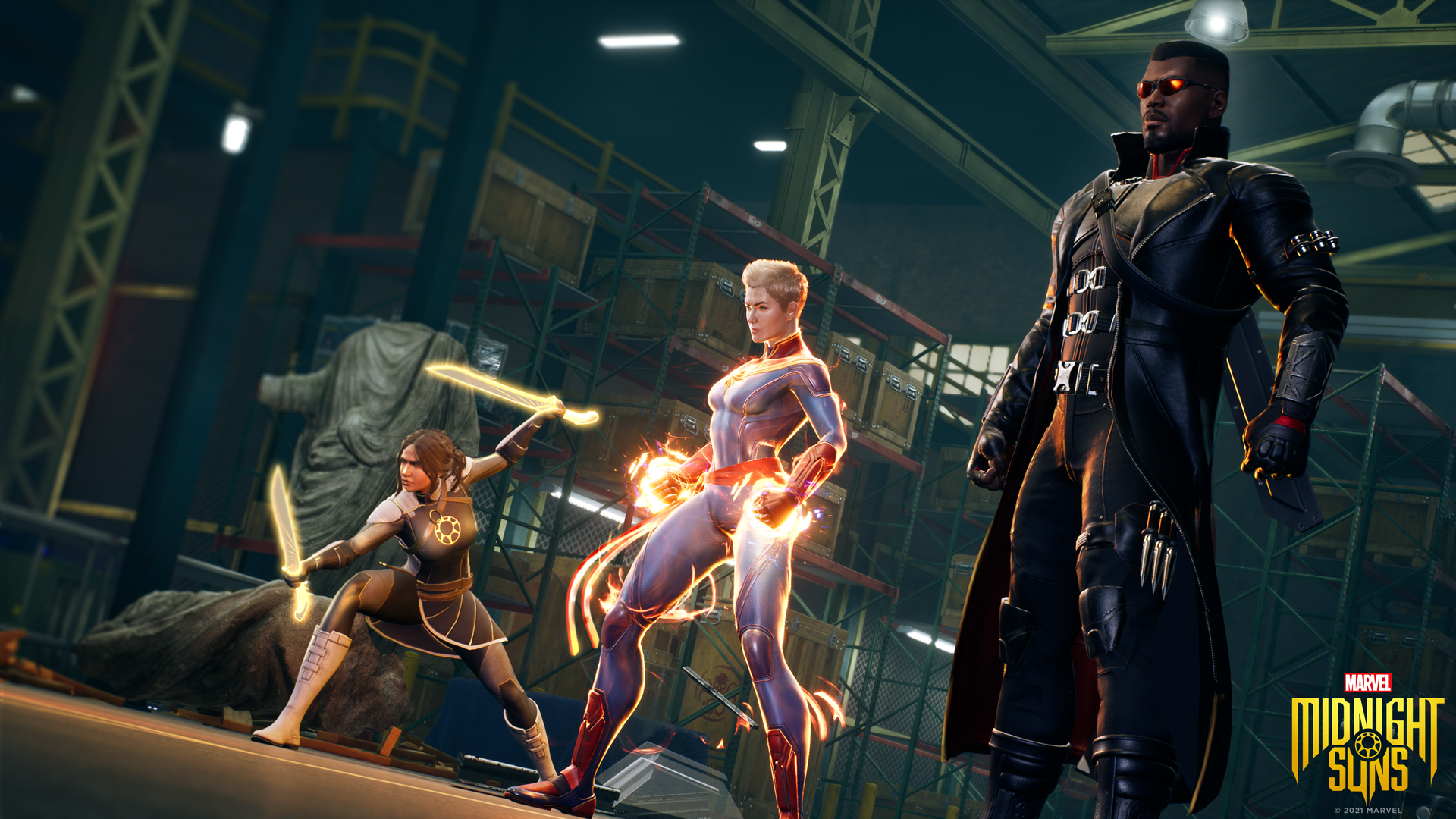
"Effects are incredibly important to it as well," he says. "Like Captain Marvel shooting a Photon Beam. If the animation is powerful and fast and snappy, but then the particles come out slow and wavy it's kind of like a cloud that loses all its energy. So I was showing off how quickly the effects appear [in Dragon Ball Fighterz] and they move like lightning, like framing through lightning, and it's just this pose and then this pose and your electricity kind of popping. So we specifically looked at that and just a bunch of different animated clips. But I remember specifically Dragon Ball Fighterz."
Obviously, Firaxis also closely examined Midnight Sons and other comics, not to mention the Marvel anime and cartoons including some broader X-Men material. The result of this eclectic knowledge base, this melting pot of seemingly opposing ideas and aesthetics filtered through the makers of XCOM, is a Marvel game that's as promising as it is fascinating.
Marvel's Midnight Suns caught my attention purely because I like strategy games, card games, and Firaxis games, and that part of me has definitely found plenty to latch onto. But it's the game's surprising DNA that really set the hook. Slay the Spire, Into the Breach, Persona, anime – little bits and pieces of so much more than Marvel comics and XCOM were folded into this game, in what feels like a clever and elegant way so far. It's a chimera of licenses, indie games, and both Eastern and Western design principles, and after spending just a few hours with it, I can't wait to see how it plays out in the wild.
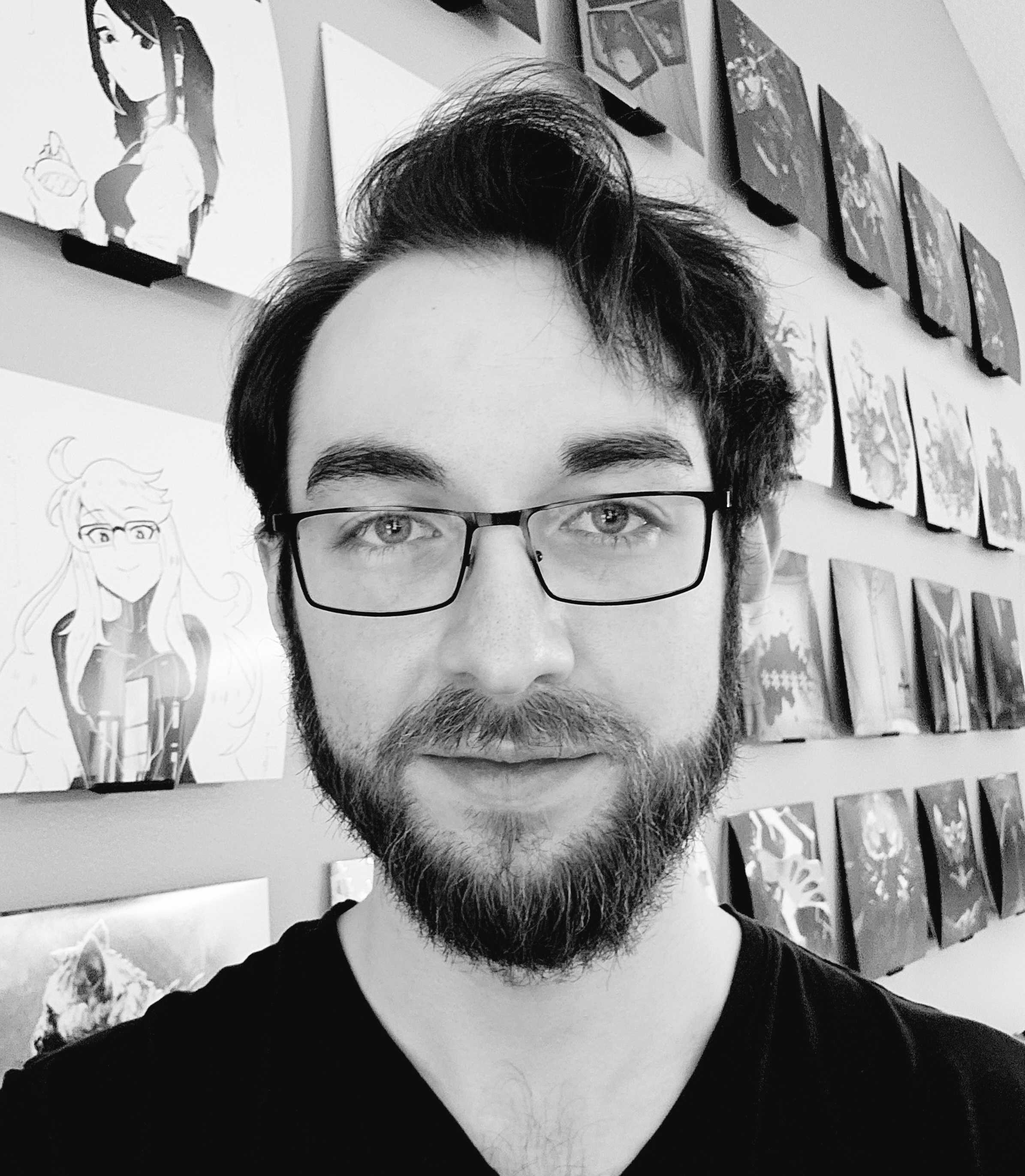
Austin has been a game journalist for 12 years, having freelanced for the likes of PC Gamer, Eurogamer, IGN, Sports Illustrated, and more while finishing his journalism degree. He's been with GamesRadar+ since 2019. They've yet to realize his position is a cover for his career-spanning Destiny column, and he's kept the ruse going with a lot of news and the occasional feature, all while playing as many roguelikes as possible.


